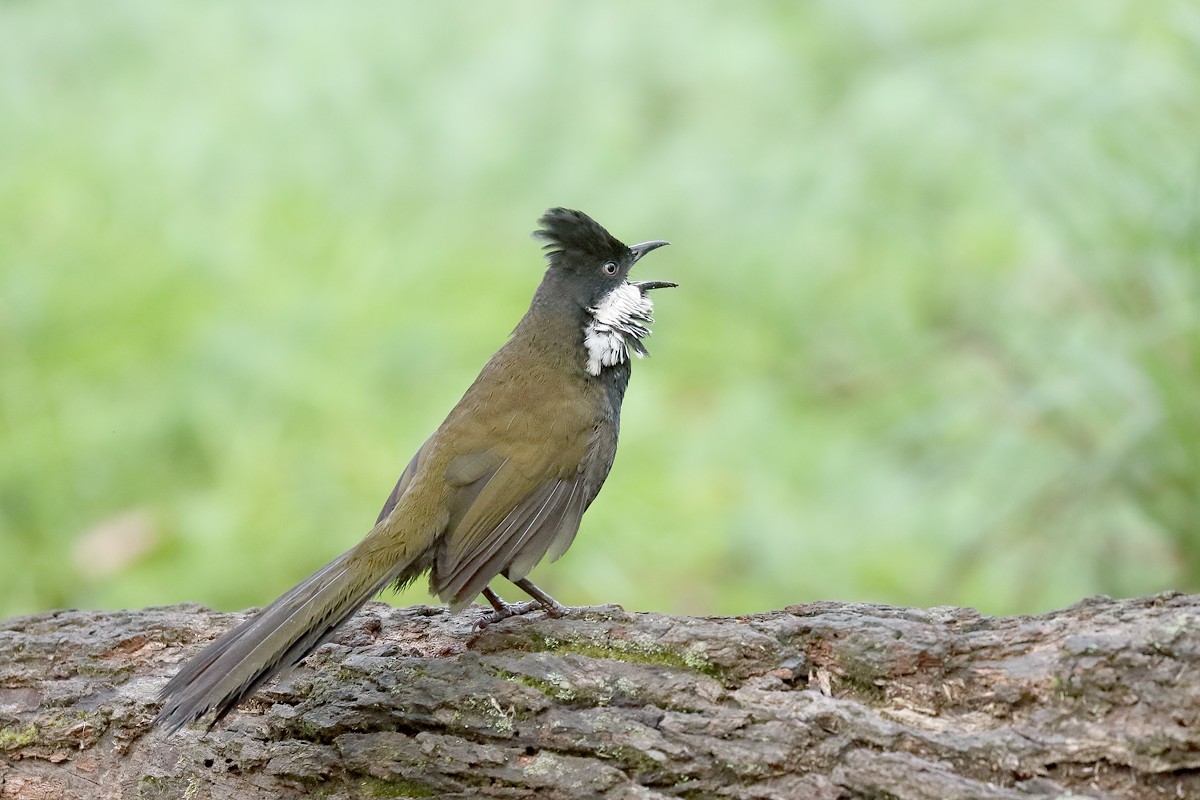Eastern Whipbird
A species of Australian Whipbirds and Wedgebills Scientific name : Psophodes olivaceus Genus : Australian Whipbirds and Wedgebills
Eastern Whipbird, A species of Australian Whipbirds and Wedgebills
Botanical name: Psophodes olivaceus
Genus: Australian Whipbirds and Wedgebills
Content
Description People often ask General Info
Description
A slim bird some 26–30 cm (10–12 in) in length and 47–72 grams (1.7–2.5 oz) in weight, it is olive green with a black head and breast. It has a small black crest with a white cheek-patch on its face. It has a paler abdomen with a long dark olive-green tail tipped with white. The iris is brown and bill is black with blackish feet. The male is slightly larger than the female. Juveniles are a duller olive-brown and lack the white cheek stripes and dark throat. The eastern whipbird is generally shy, and is heard much more often than seen. Its long drawn out call - a long note, followed by a "whip crack" (which is the source of the common name) and some follow on notes - is one of the most distinctive sounds of the eastern Australian bush. The call is usually a duet between the male and female, the male producing the long note and whip crack and female the following notes. Calls are most frequent in the early morning, though do occur through the day with small peaks at noon and sunset. Though male calls are consistent across the species range, a high degree of variation in female calls has been reported. The call samples have been used in many films such as: Bush Christmas 1983 and The Dark Crystal 1982 
Size
30 cm
Nest Placement
Ground
Feeding Habits
Eastern Whipbird primarily consumes insects, spiders, millipedes, and occasionally small lizards and frogs, supplemented with seeds, shoots, and fruits. It forages alone or in small groups on the ground and vegetation, using its bill to turn debris and glean prey. Unique behaviors include inspecting fruits for insects and eating seed pulp by holding it with its foot.
Habitat
Eastern Whipbird flourishes in dense, moist woodlands, primarily temperate rainforests and wet sclerophyll forests near water sources. Their habitats are typified by thick underbrush suitable for shelter and feeding, extending from sea-level to highlands up to 1500 meters. Although favoring natural forest environments, eastern Whipbird also inhabits modified terrains like exotic pine plantations.
Dite type
Insectivorous
People often ask
General Info
Feeding Habits
Bird food type
Behavior
The eastern whipbird is insectivorous, recovering insects from leaf litter on the forest floor. 
Distribution Area
The eastern whipbird is found in wet temperate forests including both rainforests and wet sclerophyll forests, generally near water. It occurs from eastern Victoria north through to central Queensland. A northern race, sometimes known as the northern whipbird (Psophodes olivaceus lateralis) is found in the wet tropics of North Queensland from Cooktown to Townsville. At least one study has found it to be a specialist species in terms of habitat and threatened by urbanisation. 
Species Status
Not globally threatened.
Scientific Classification
Phylum
Chordates Class
Birds Order
Perching birds Family
Whipbirds and wedgebills Species
Eastern Whipbird 